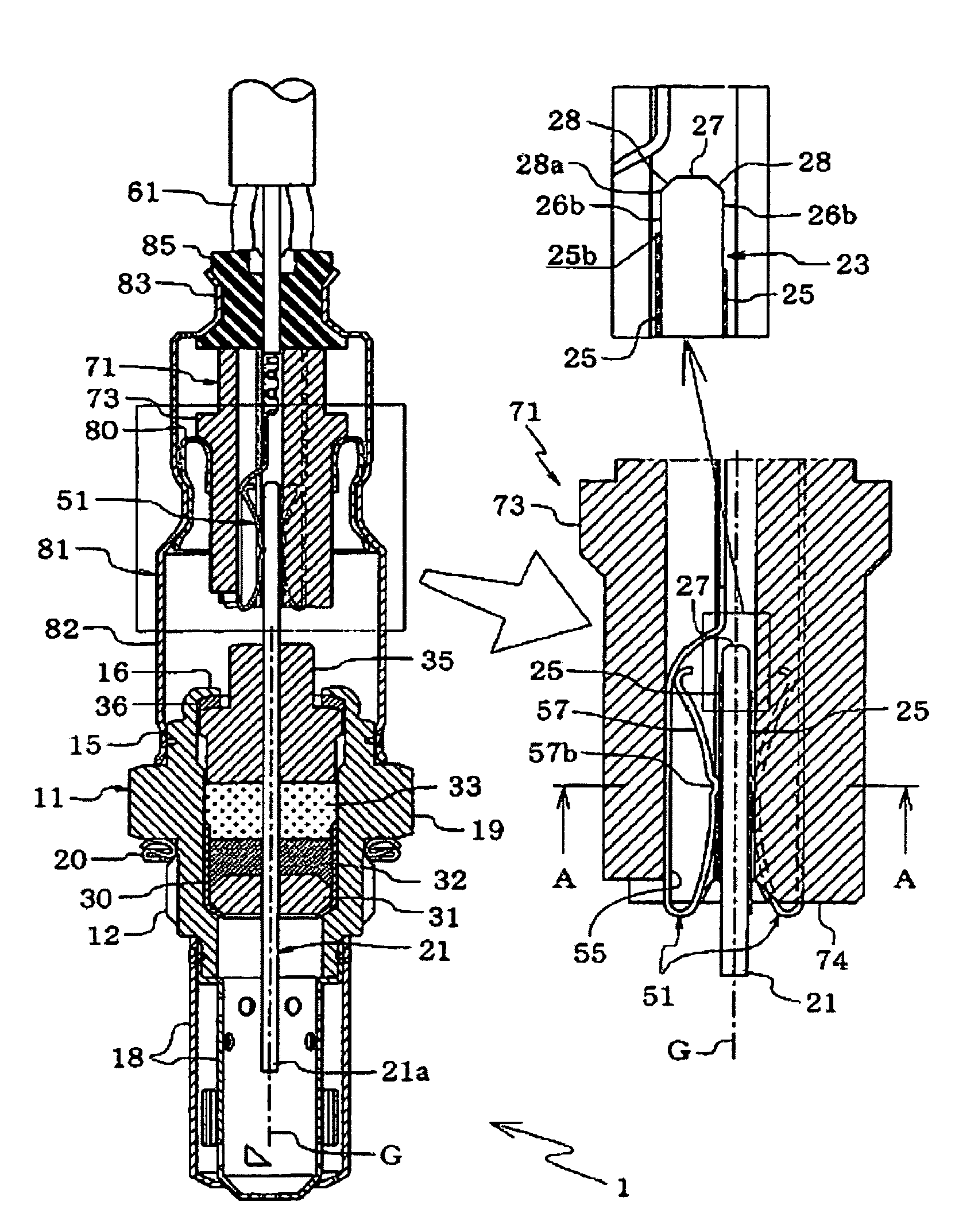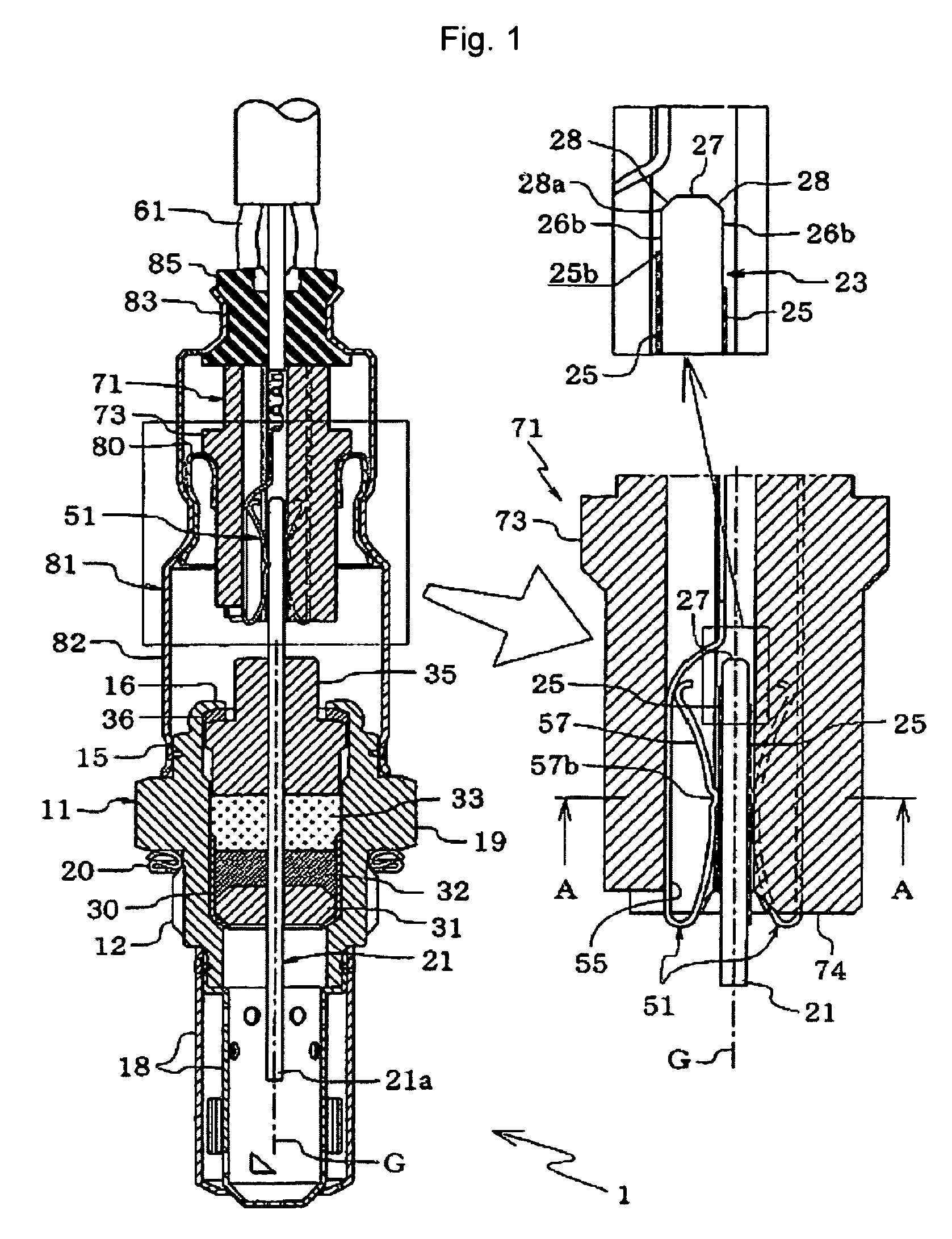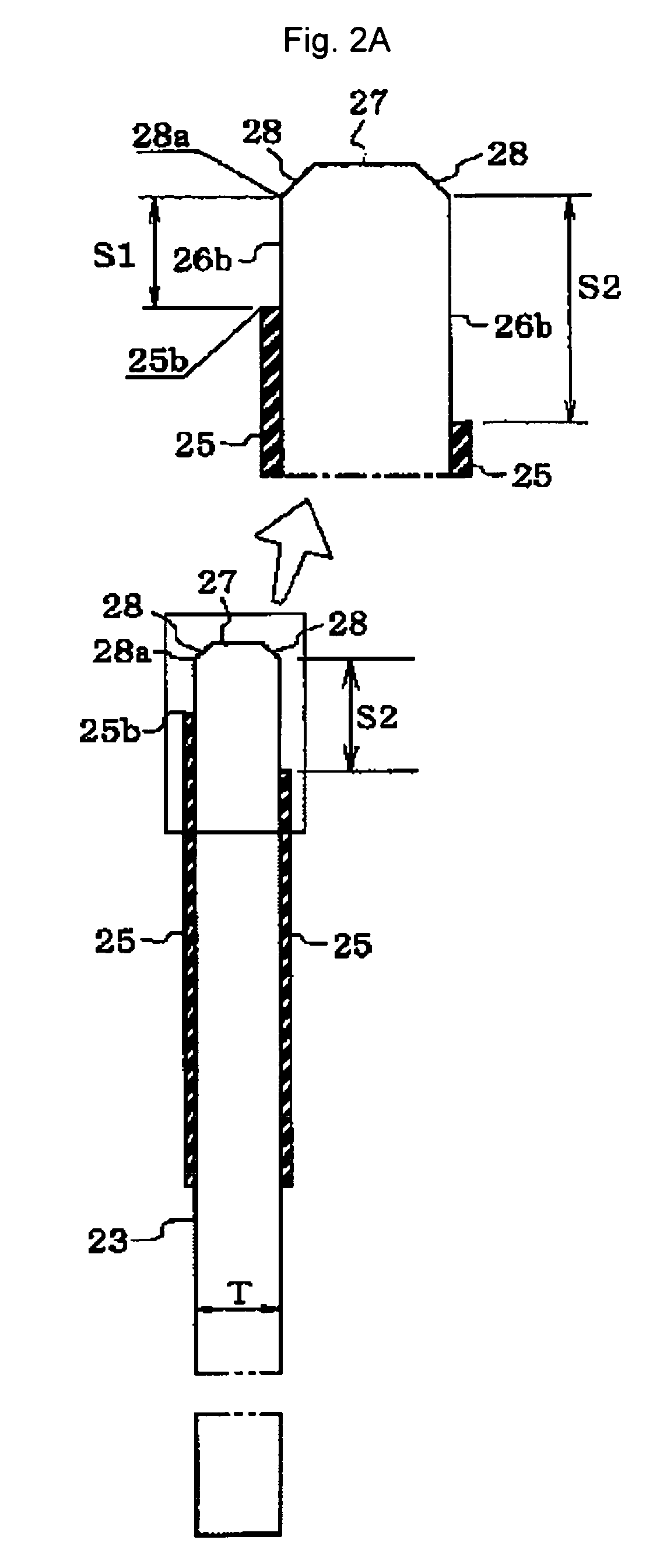Sensor including a sensor element having electrode terminals spaced apart from a connecting end thereof
a sensor element and sensor technology, applied in the direction of instruments, specific gravity measurement, material analysis, etc., can solve the problems of deterioration in connection reliability and undesirable deformation, and achieve the effects of reducing the insertion resistance, and preventing damage to the electrode terminal
- Summary
- Abstract
- Description
- Claims
- Application Information
AI Technical Summary
Benefits of technology
Problems solved by technology
Method used
Image
Examples
Embodiment Construction
[0060]The invention will next be described in detail with reference to the drawings. However, the present invention should not be construed as being limited thereto.
[0061]In the present mode, the invention is embodied as a full range air / fuel ratio sensor for detecting oxygen concentration in exhaust gas. Thus, the configuration of the sensor will first be described in detail.
[0062]In the drawings, reference numeral 1 denotes a full range air / fuel ratio sensor. A sensor element 21 is airtightly fixed in the interior of a tubular metallic shell body 11 (hereinafter, also referred to as the shell body 11). The sensor element 21 is formed predominantly of ceramic, has an elongated plate-like shape having a rectangular cross section, and includes a detection portion (not shown) 21a located at its front-end portion (a lower portion in the drawings) to be directed toward a measurement object. The metallic shell body 11 is formed into a stepped cylindrical shape such that its inside diamet...
PUM
| Property | Measurement | Unit |
|---|---|---|
| distance | aaaaa | aaaaa |
| length | aaaaa | aaaaa |
| longitudinal length | aaaaa | aaaaa |
Abstract
Description
Claims
Application Information
 Login to View More
Login to View More - R&D
- Intellectual Property
- Life Sciences
- Materials
- Tech Scout
- Unparalleled Data Quality
- Higher Quality Content
- 60% Fewer Hallucinations
Browse by: Latest US Patents, China's latest patents, Technical Efficacy Thesaurus, Application Domain, Technology Topic, Popular Technical Reports.
© 2025 PatSnap. All rights reserved.Legal|Privacy policy|Modern Slavery Act Transparency Statement|Sitemap|About US| Contact US: help@patsnap.com



